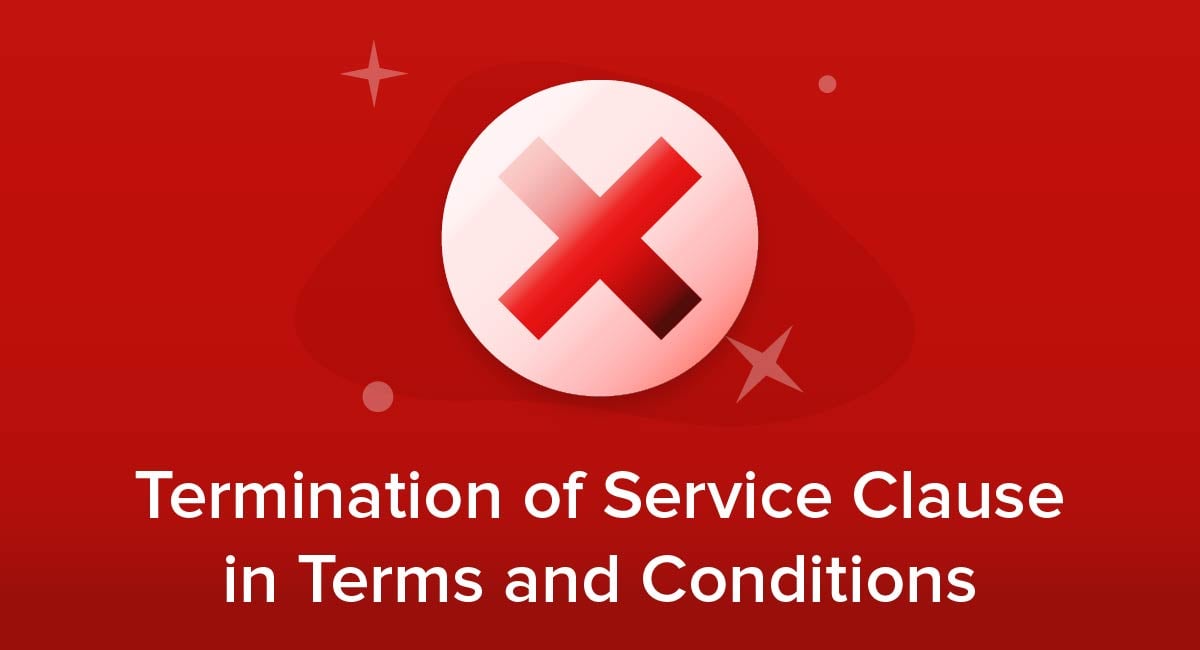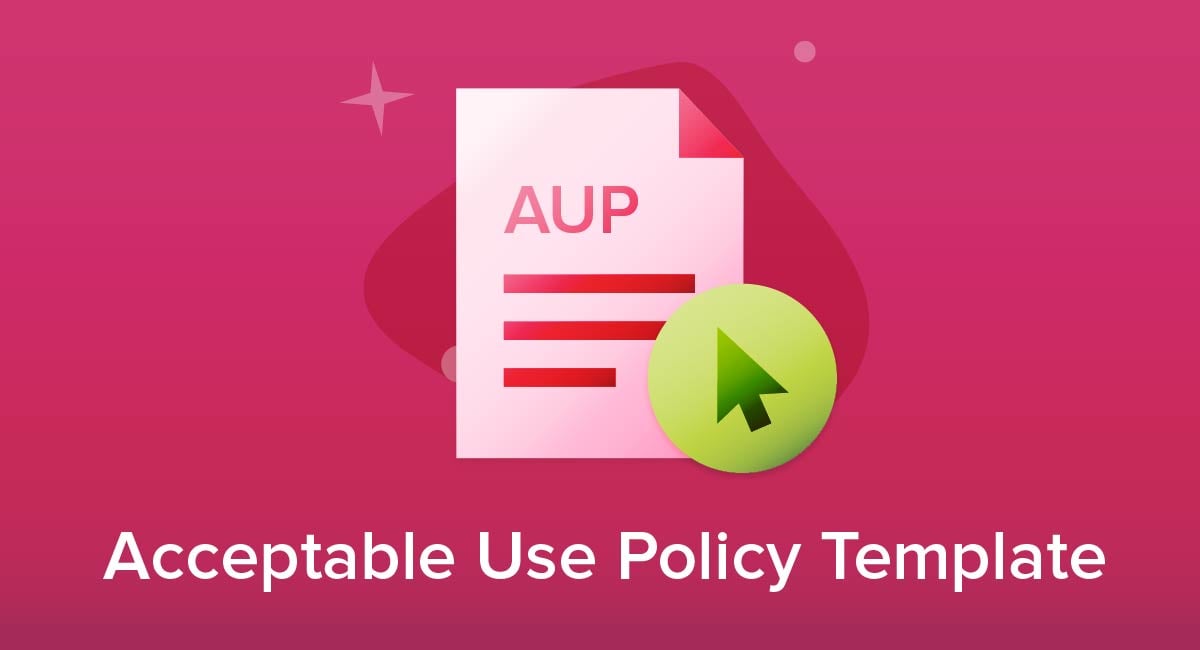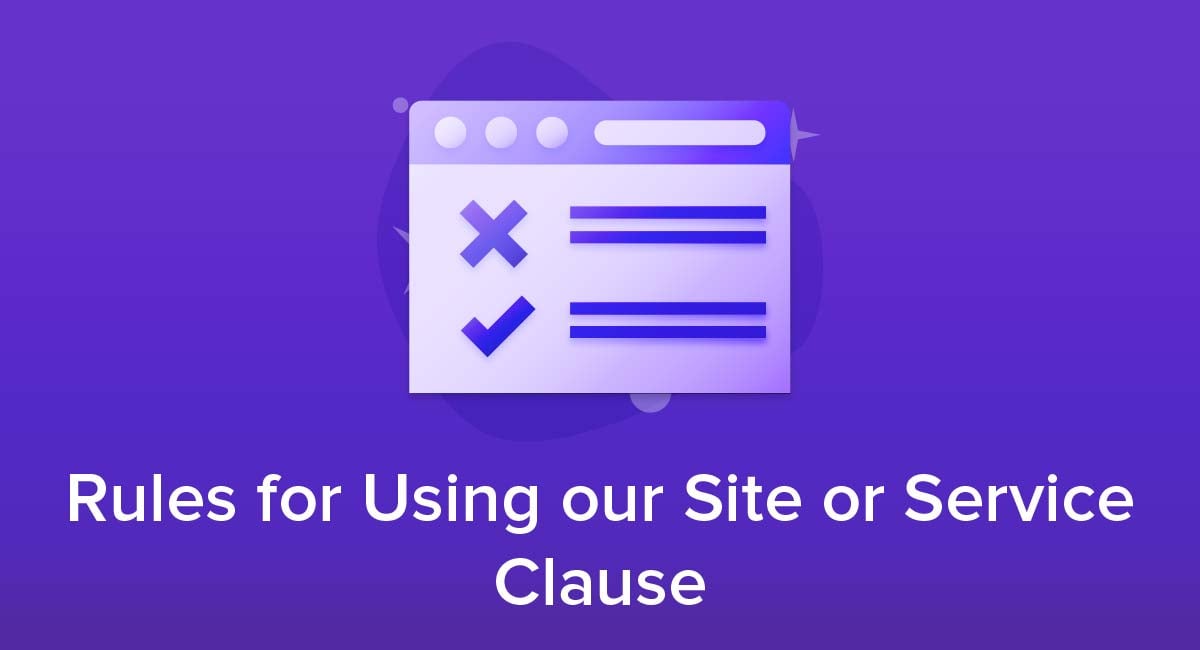
When it comes to your website or online service, rules are definitely a good idea for a number of obvious reasons.
Having rules in place and publicly available in your Terms and Conditions agreement can significantly reduce the risk of you getting involved in a legal dispute with users, while making it easier to take action against those who break the rules.
Here's what you need to know about this important clause and how to draft and display your own.
Our Free Terms and Conditions Generator is created to help you generate a professionally drafted agreement that can include various terms and conditions for your site and/or app.
- Start the Free Terms and Conditions Generator from our website.
- Select platforms where your Terms and Conditions will be used (website, app or both):
- Answer a few questions about your website or app information:
- Select the country:
- Answer a few questions about your business practices:
-
Enter your email address where you'd like to receive the new Free Terms and Conditions and click "Generate":
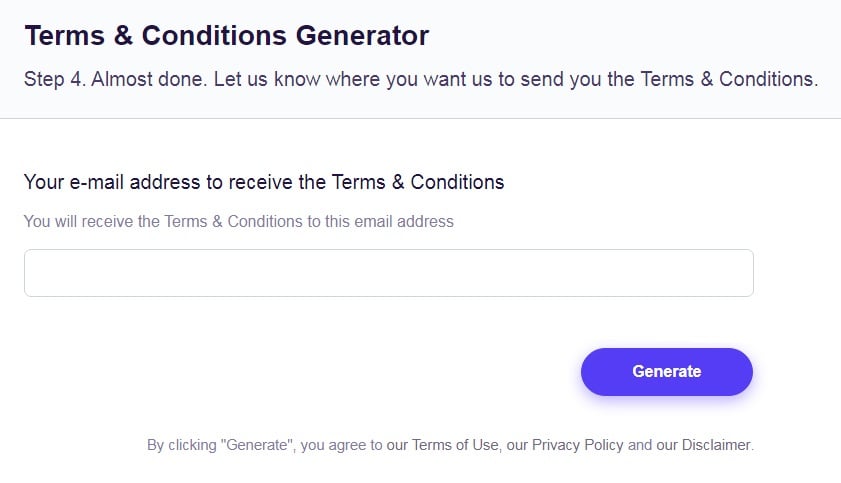
Once generated, you can copy and paste your Free Terms and Conditions agreement on your website or app or link to your hosted Free Terms and Conditions page.
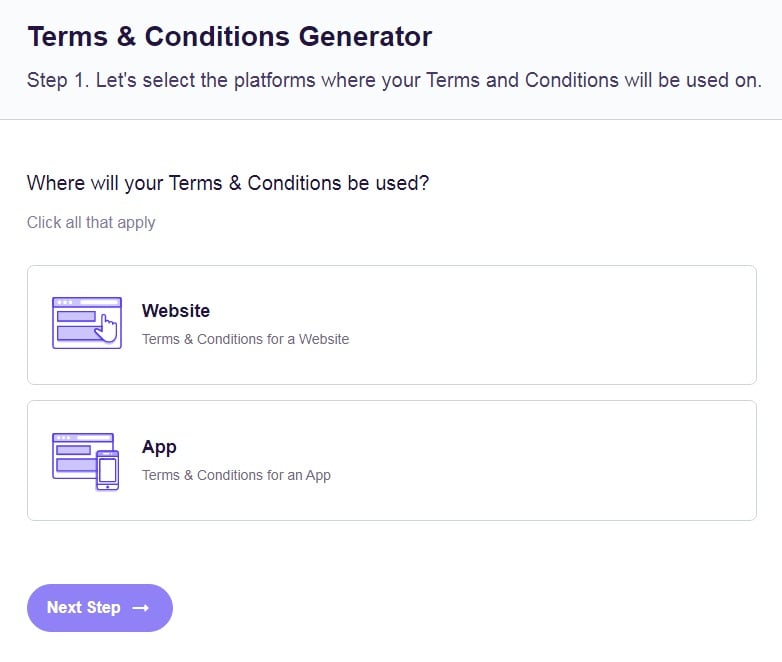
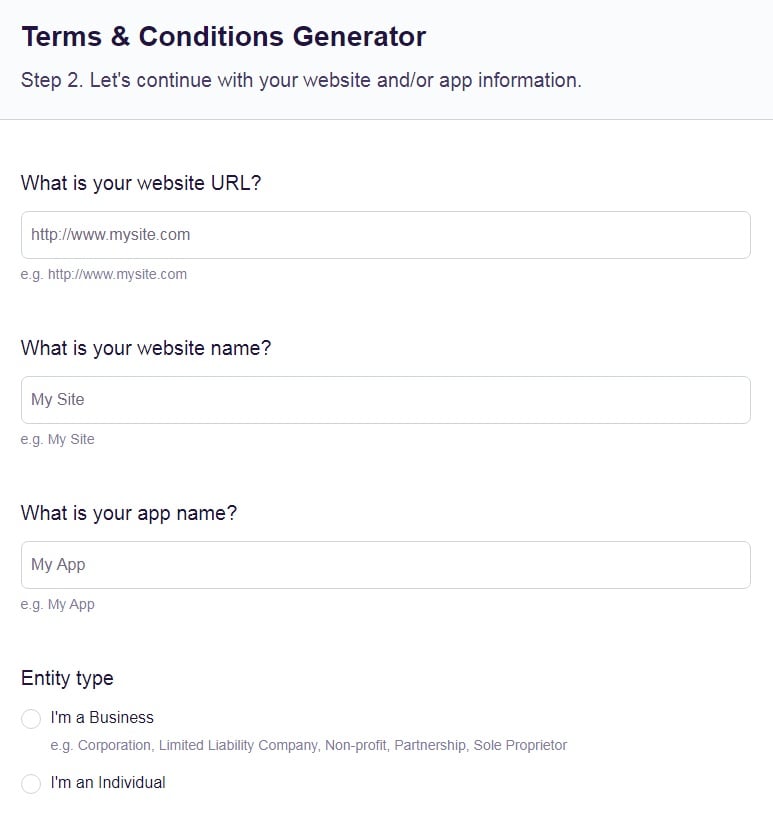
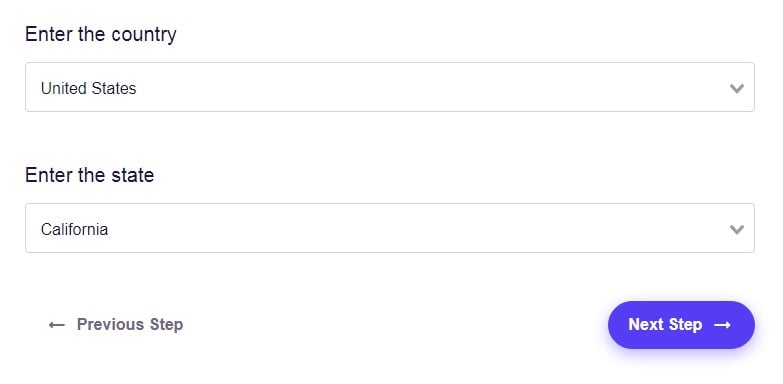
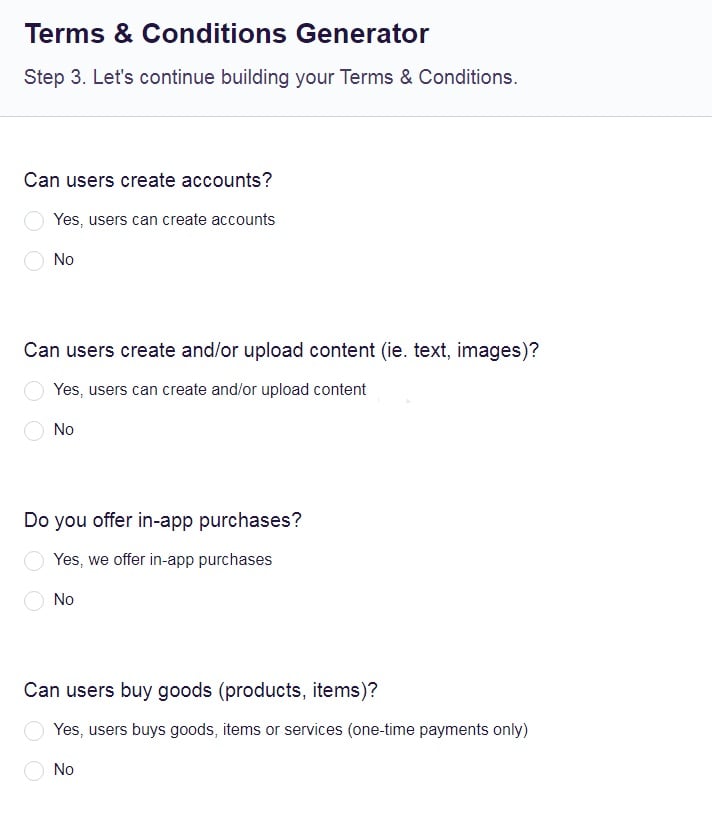
- 1. Why You Need a Rules for Using our Site or Service Clause in Your Terms and Conditions Agreement
- 2. What to Include in a Rules for Using our Site or Service Clause
- 2.1. Banned or Restricted Actions
- 2.2. Consequences of Breaching the Rules
- 3. How to Display a Rules for Using our Site or Service Clause
- 4. Summary
Why You Need a Rules for Using our Site or Service Clause in Your Terms and Conditions Agreement
While there's nothing to stop you from running a website or online service without listing any rules, doing so is usually a bad idea.
The biggest reason to list rules is to reduce the chances of users doing something you don't want them to do. By making the rules clear via a Terms and Conditions agreement, you reduce cases where people do something they didn't realize was wrong. You also reduce cases where they know it's wrong but think they can get away with it.
In the bigger picture, a clear set of rules reduces the chances of legal problems. This could be where you try to take action against a user over a breach. It could also be where the user takes action over your response to a breach. Either way, avoiding legal disputes can save time, money and bad feelings between you and the public.
Clear rules aren't just a shield for you against your users. Additionally, they can give users more confidence and certainty about using your site and service. They can also reduce people's worries about being affected by the inappropriate actions of other users.
What to Include in a Rules for Using our Site or Service Clause

Banned or Restricted Actions
You should clearly set out any actions that you do not allow users to take. These could include the following:
- Breaching your intellectual property rights
- Causing harm to other users
- Posting unlawful material on the site
- Posting offensive or inappropriate material on the site
- Posting defamatory material on the site
- Damaging or attempting to damage the site
- Attempting to bypass a paywall or similar measure
- Falsely impersonating somebody when posting to a site
Think carefully about how much detail you give when listing banned activities. Try to find a balance of being detailed enough that people can't "escape on a loophole" but not so detailed that the clause becomes unreasonably lengthy and deters people from reading it.
Facebook uses a short list with examples and links to more details in its Terms of Service:
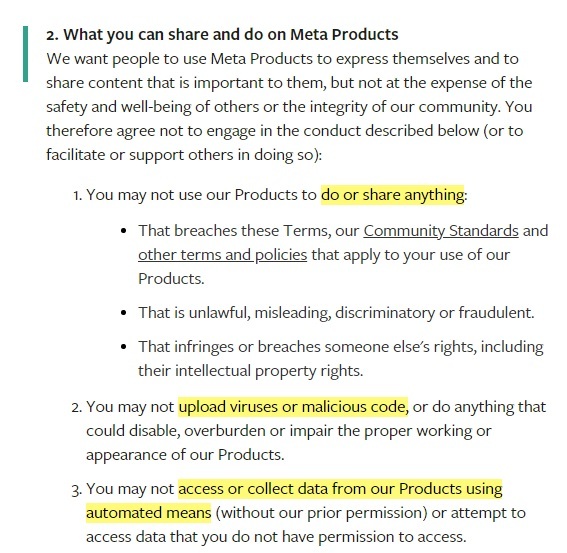
In some cases you can aid clarity by detailing actions users are allowed to take. This could include downloading files for personal use, for example.
Instinct highlights that users can download and print pages for personal use:

Consequences of Breaching the Rules
You must clearly state what will happen if somebody breaches the rules. Doing so will dramatically reduce the chances that somebody legally challenges your actions in response to a breach, as well as reducing the likelihood that such a challenge will succeed.
Consequences could include:
- Issuing a warning or "strike" against a user, with multiple strikes leading to more severe action
- Suspending somebody from using parts of your service, such as a public forum or message board
- Permanently barring somebody from using a part of your service
- Canceling a user's membership or subscription to your site or service.
TikTok explains its policy of escalating consequences:
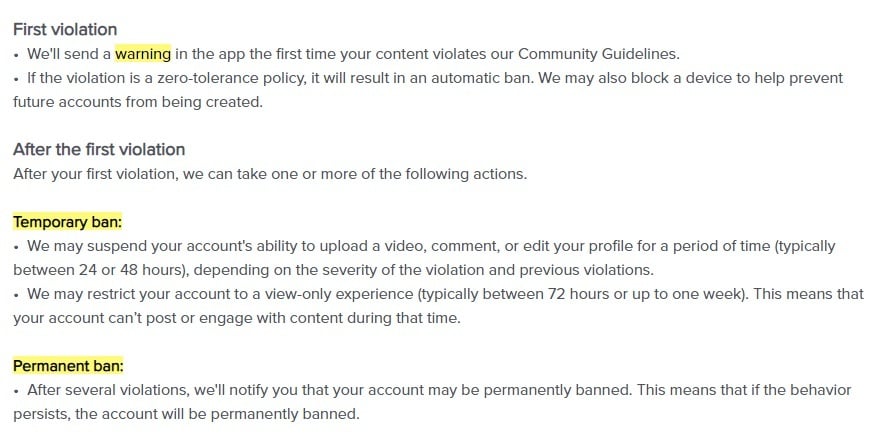
You should also address the knock-on consequences of any of these actions that you take:
- You should make clear that these consequences don't restrict or override your right to take legal action, for example to pursue damages from the user.
- If you operate a premium or subscription service, you should make clear whether a suspended or banned user is entitled to a full or partial refund. If your policy is to give no refund at all, you should check this is lawful in your jurisdiction and make certain your policy is explicitly clear on this point. You should also make certain you can show the user had a reasonable opportunity to become aware of this policy (and preferably that they have confirmed reading and agreeing to it).
- You should explain what happens to any of the user's content or data (such as message board posts) if you suspend or ban them. For example, you could say you will delete it immediately or delete it after giving the user a short period to download a copy.
How to Display a Rules for Using our Site or Service Clause

If you want to enforce your rules, you should make sure users know about them before they use your site or service. The best way to do this is by displaying the clause within a Terms and Conditions agreement that you display on your website.
This option works well if you have a relatively short list of rules and your Terms and Conditions agreement is detailed and organized into logical sections.
The National Partnership for Women & Families builds the rules into a combined Privacy Policy/Terms of Use page:
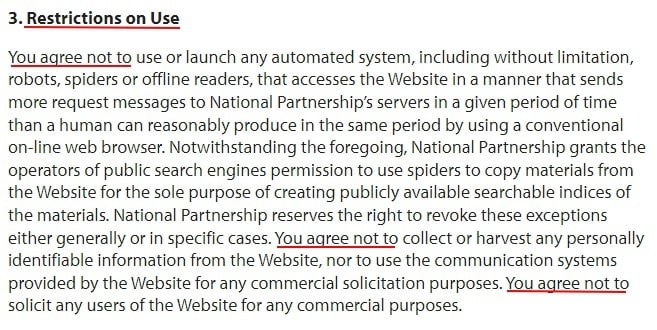
To make certain users understand the rules and agree to follow them, you should direct them to the rules at the point they are about to start using your service, for example when signing up for a user account or paid membership.
Using a checkbox or confirmation button to get consent for the overall agreement can help you prove the user understood and agreed to the rules.
Summary
Let's recap what you need to know about a rules for using our site or service clause:
This clause isn't usually legally required but is a good idea to:
- Stop users doing something you don't want them to do
- Avoid legal disputes
- Make users confident about using your site or service
The clause should address:
- What actions are banned
- Any actions you need to make clear are allowed
- The consequences of breaking the rules
- If you want to ban users without offering a refund, or delete their content, you must make extra sure the rules are clear and users will see them.
Display the clause as part of a Terms and Conditions agreement and get appropriate consent.
